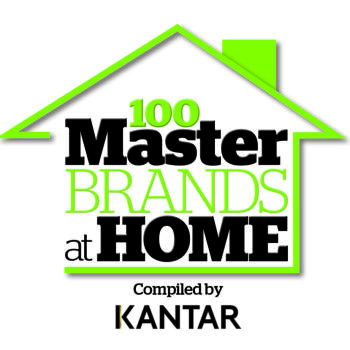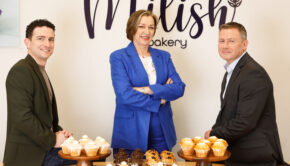Kantar 100 Master Brands at Home

While Kantar’s 100 Master Brands at Home listing is self-explanatory in its positioning, the complexities of how the list is quantified and compiled provides much insight into Irish consumers’ shopping habits. Kantar Ireland managing director David Berry offers some insight into more significant gains, and what this means, both in-store and in the wider context of consumer behaviour
17 June 2019
In grocery, brand loyalty is an act that can define the fortunes of a brand for years, decades or even generations. The quality of the product is of the utmost importance, but there is an emotional connection to the product also, the way it makes one feel, that causes consumers to choose it again and again, sometimes for a lifetime
It is those “most-chosen” brands that the annual research carried out by Kantar aims to identify. Every June, the Kantar 100 Master Brands at Home listing is published, populated by 100 household names across segments, including soft drinks, crisps and snacks, prepacked meats, cereal, confectionery and more.
The ranking is based on an innovative metric created by Kantar based on Consumer Reach Points (CRP) and applied in yearround research involving
5,000 households representative of the Irish population. These households’ grocery purchases are monitored, and with this information, Kantar is able to create a highly accurate and revealing snapshot of Ireland’s most popular brands.
The full list begins below, but first, we chat to MD of Kantar in Ireland, David Berry, who offers some insight on what the main movement within the list means in grocery and in Irish society as a whole.
 SL. Which two brands have made the largest jumps within the ranking this year and what factors would you attribute this success to?
SL. Which two brands have made the largest jumps within the ranking this year and what factors would you attribute this success to?
DB: The results this year make good reading for brands – we have seen 58 of the top 100 brands enjoy an increase in their footprint. Given the ongoing price competitive nature of the grocery market and recent rise of retailer own-brand offerings, this is a very strong performance. Two of the brands that have really caught our attention this year are the crisp brand Keogh’s and the fabric softener Comfort. Keogh’s is a new entry to the top 100 ranking, entering at a highly commendable 63rd place. Significant, successful innovation has played a key part in the success of Keogh’s. Crinkle Cut, limited edition flavours and new pack formats have all helped to grow the snacks business in recent years, but interestingly it is the range of potato products that have shown the strongest increase in footprint this year.
Within the 100 most-chosen brands, Comfort is a brand that has proven that growth is still attainable for strong, well established premium brands. One of the key differences for Comfort across 2018 was the brand’s stronger physical availability. New listings within Aldi helped to recruit new shoppers, with more than 5% of Irish households having picked up the brand in Aldi alone. Added to the continued investment in innovation, Comfort Perfume Delux launched in early 2018, which has helped the brand expand its consumer reach by 700,000 points.
SL: Kenco rose 15 places in the ranking this year. To what extent does this reflect the overall growth of the coffee sector and innovation within this category?
DB: As a category, coffee has been one of the main success stories in recent years – consistently growing its reach and becoming a more popular item on the nation’s shopping lists. Back in 2014, the coffee category was purchased by 86% of Irish households 14 times per year. Fast forward to today and this has grown to 87% of households buying 16 times – an extra 3.6 million occasions. Branded innovation has driven this growth, with all the major players having grown their product offering and giving consumers greater choice. Over the last year, Kenco in particular has seen strong success, growing household penetration to 34% and encouraging consumers to pick up the brand more often.
SL: Which categories have shown the greatest growth this year and what does this reveal about changing consumer trends?
DB: Mineral water is the strongest growing category this year. Its CRP increased by 3.5 million points as 64,000 additional households purchased the category an extra 1.4 times throughout the year. This clearly suggests that health remains at the forefront of consumer concerns, but it has not hindered the growth of indulgent categories. In fact, we have also noticed shoppers’ increased willingness to treat themselves – evident in the accelerated growth of categories such as alcohol, ice cream and soft drinks, with increased purchase frequency being the primary driver of growth for all the categories. Coffee and hot beverages, as mentioned, has been another stand-out category in terms of CRP growth this year. Rounding off the top six growing categories is ready meals – purchased by 92% of Irish households on average 22.8 times per year – its CRP has increased by 2.2 million points year-on-year, indicating that convenience is another trend that shows no signs of slowing down.
SL: Traditionally, Irish brands have always performed well within the 100 Master Brands at Home ranking. How significantly has this continued in 2019 and what lessons can we take from this in terms of relaying a clear ‘brand story’ and/or artisan credentials?
DB: Looking at our list of the 100 most-chosen grocery brands, half of those featuring are of Irish origin – highlighting how firmly established Irish favorites are among Irish households. What is even more interesting is that 60% of the Irish brands in the list have seen an increase in their consumer reach this year. This is slightly higher than those brands of non-Irish origin (57%) showing that the flexibility and authenticity of a local brand can be a real asset.
SL: Marketing campaigns are obviously crucial in terms of connecting with a brand’s target audience. Which brands have delivered the strongest evidence of the importance of a clever 360-degree campaign?
DB: Brady Family has adopted an insightful approach to marketing, culminating in a 9% increase in its consumer reach. Our carbon footprint and its effect on our surroundings is topical, and many shoppers desire to minimize theirs. The launch of the on-trend ‘Low Food Miles’ campaign communicated to the environmentally conscious shopper, while reinforcing the provenance and artisanal nature of the products. Brady Family also collaborated with the popular food blogger ‘Leanmeanmomma’ to showcase its quality local products, illustrate original recipes and demonstrate the brand’s ease of use. The ‘Low Food Miles’ campaign was further emphasized through this partnership by the creation and presentation of recipes which contained only locally and nationally-sourced products. A perceptive marketing strategy combined with the launch of a new contemporary and premium range has resulted in a successful year, with Brady Family increasing its frequency by 8.4%.
To view the 2019 Kantar 100 Master Brands at Home, click here.



 Print
Print






Fans 0
Followers